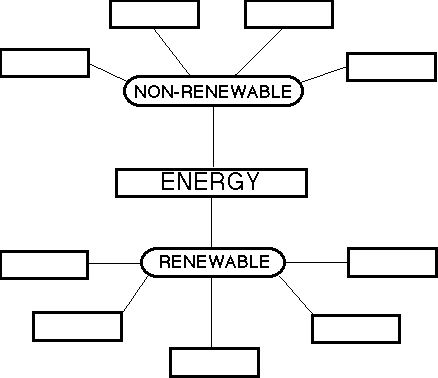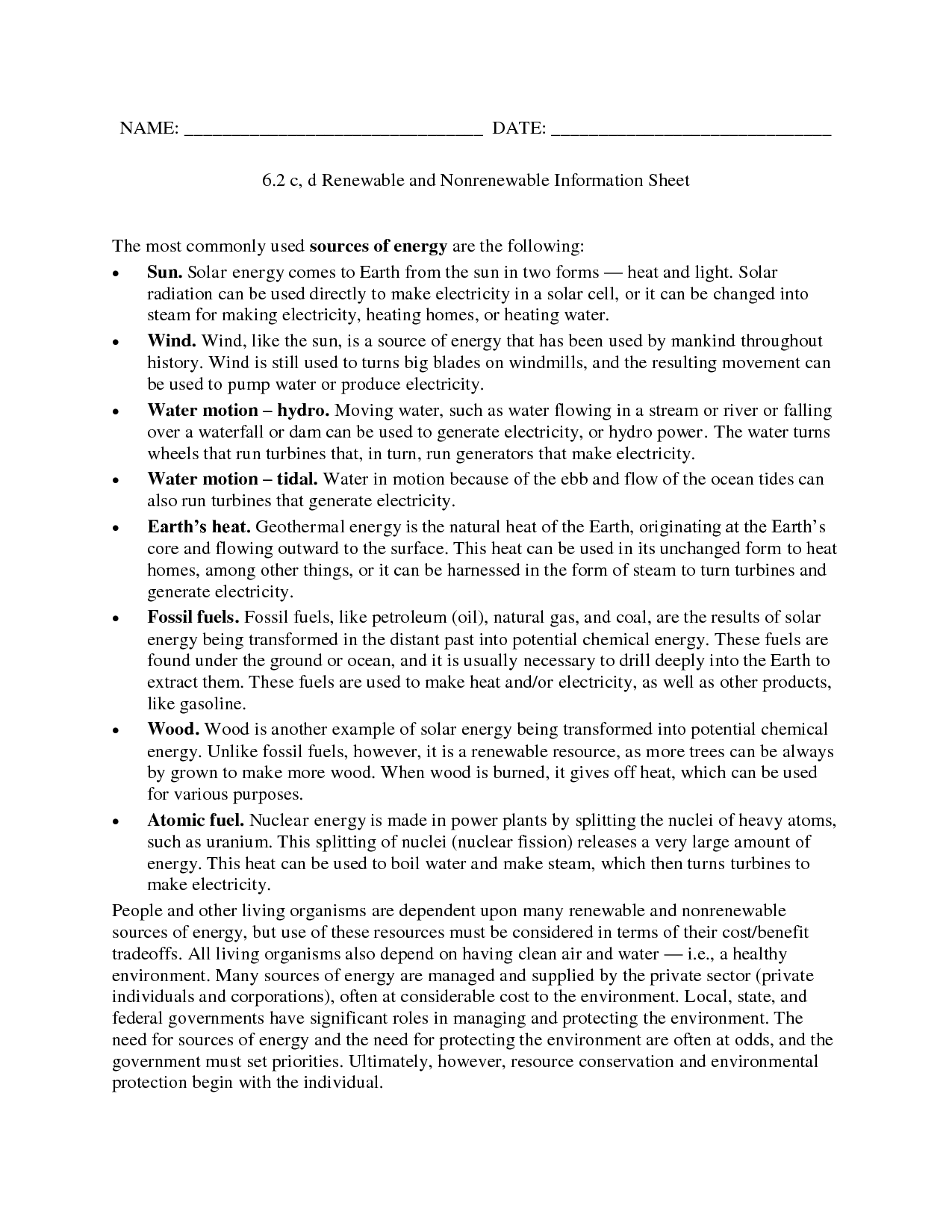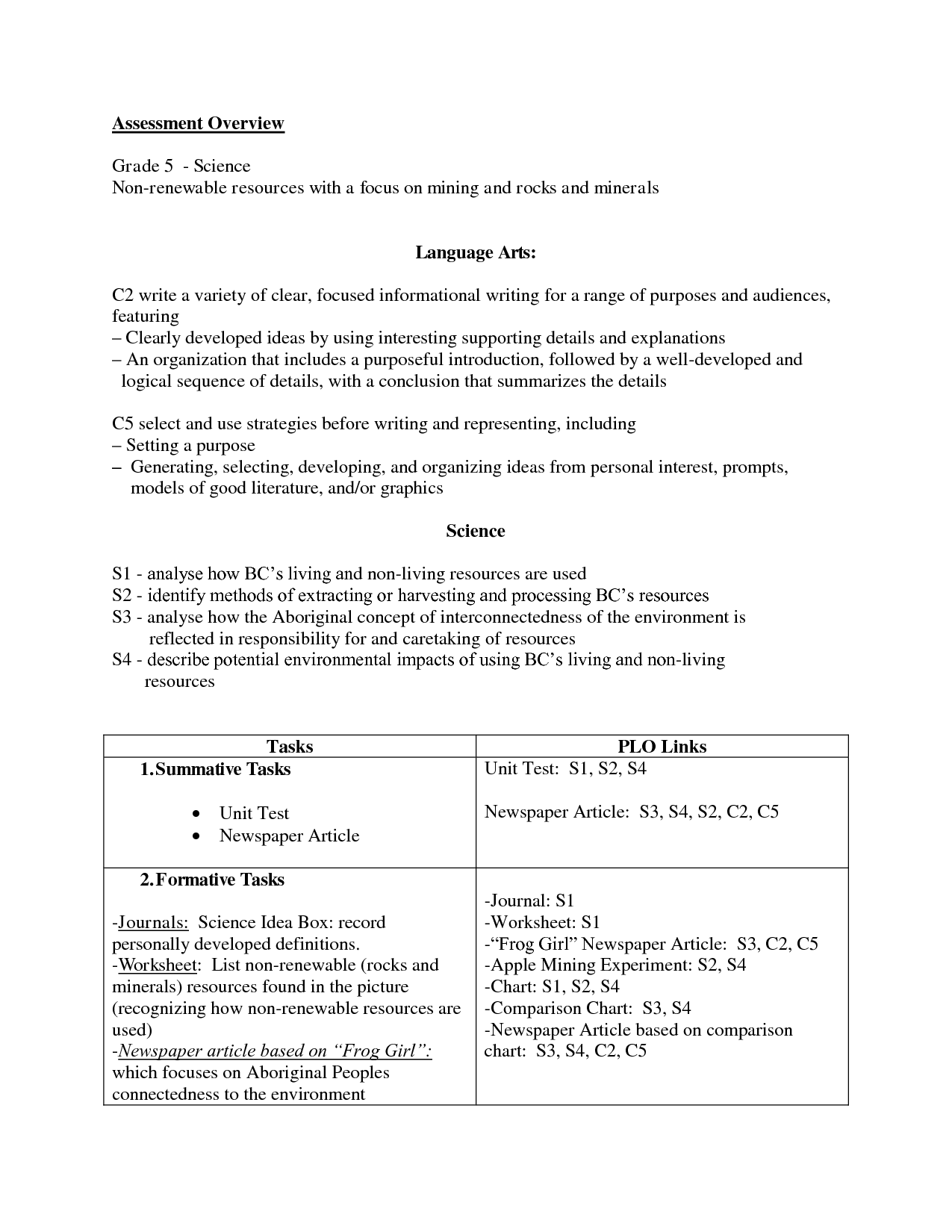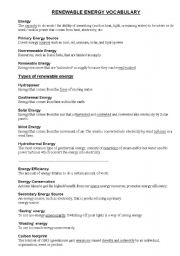Renewable Energy Resources Worksheet
If you are a student or educator seeking a comprehensive and user-friendly resource to explore the fascinating world of renewable energy, then this Renewable Energy Resources Worksheet will cater to your needs. This worksheet is designed to provide a clear understanding of various renewable energy sources and their significance in sustainability efforts.
Table of Images 👆
More Energy Worksheets
Light and Heat Energy WorksheetsTypes of Energy Transfer Worksheet
Energy Light Heat Sound Worksheets
3 Forms of Energy Worksheets
Energy Worksheets for Third Grade
What is renewable energy?
Renewable energy is energy that is derived from natural resources that are constantly replenished, such as sunlight, wind, and water. These sources of energy are sustainable and have minimal impact on the environment compared to non-renewable sources like fossil fuels. Generating electricity from renewable energy sources helps reduce greenhouse gas emissions and combat climate change.
What are the types of renewable energy sources?
The types of renewable energy sources include solar power, wind power, hydropower, geothermal energy, and biomass. These sources utilize natural processes that are constantly replenished, making them sustainable alternatives to fossil fuels for generating electricity and meeting energy needs.
How does solar energy work?
Solar energy works by capturing sunlight and converting it into electricity through the use of photovoltaic cells or solar panels. When sunlight hits the solar panels, the photons in the light excite electrons in the cells, creating an electric current. This electricity can then be used to power homes, businesses, and other electrical devices, making solar energy a sustainable and renewable source of power.
What is wind energy and how is it harnessed?
Wind energy is a renewable energy source derived from the natural movement of air masses in the Earth's atmosphere. It is harnessed by using wind turbines, which capture the kinetic energy of the wind and convert it into electricity through the rotation of blades connected to a generator. The wind turbines are strategically placed in locations with high wind speeds such as open plains, coastlines, or mountain ridges to maximize energy production. The electricity generated from wind energy can then be used to power homes, businesses, and even entire communities, providing a clean and sustainable alternative to traditional fossil fuel-based energy sources.
Explain the concept of hydropower.
Hydropower is a renewable energy source that generates electricity by harnessing the energy of flowing or falling water. This is typically achieved by constructing dams on rivers or streams to create reservoirs of water. The stored water is then released, flowing through turbines that convert the kinetic energy of the water into electricity. Hydropower is a clean and sustainable energy source that doesn't produce greenhouse gas emissions, making it an important component of the transition to a more environmentally friendly energy system.
How is geothermal energy used for power generation?
Geothermal energy for power generation involves tapping into heat stored beneath the Earth's surface through geothermal power plants. This heat is used to produce steam by pumping water into underground reservoirs. The steam is then used to drive turbines, which power generators to produce electricity. The electricity generated from geothermal energy is clean, renewable, and sustainable, making it an environmentally friendly alternative to fossil fuels for powering homes, businesses, and industries.
What is biomass energy and how is it produced?
Biomass energy is a renewable energy source derived from organic materials such as wood, crop waste, or animal manure. It is produced through burning these materials to generate heat or by converting them into biofuels like ethanol and biodiesel. Another method involves using biological processes like anaerobic digestion to break down organic matter and produce biogas. Biomass energy is considered carbon-neutral as the carbon dioxide released during combustion is roughly equal to the amount absorbed by the plants during their growth, making it a sustainable alternative to traditional fossil fuels.
How does tidal energy work?
Tidal energy works by capturing the energy produced from the movement of the ocean's tides. This is typically done using tidal turbines that are placed underwater in areas with strong tidal currents. As the tides flow in and out, they cause the turbines to spin, converting the kinetic energy of the moving water into electricity. This electricity can then be harnessed and used as a source of renewable energy.
What are the benefits of using renewable energy sources?
Using renewable energy sources such as solar, wind, and hydropower provide several benefits including reduced greenhouse gas emissions and air pollution, lower energy costs in the long term, job creation in the green energy sector, enhanced energy independence and security, and preservation of natural resources for future generations. Additionally, renewable energy sources are more sustainable and have a lower impact on the environment compared to fossil fuels, making them a crucial component in addressing climate change and transitioning towards a more sustainable energy future.
What are some challenges and limitations associated with renewable energy?
Some challenges and limitations associated with renewable energy include issues with intermittency and grid integration, as renewable sources like solar and wind depend on weather conditions. Additionally, the high initial costs of installing renewable energy infrastructure can be a barrier to widespread adoption. Renewable energy technologies also face challenges with energy storage and transmission infrastructure to efficiently distribute energy to consumers. Lastly, there may be concerns about land use, environmental impacts, and disruptions to local ecosystems when developing large-scale renewable energy projects.
Have something to share?
Who is Worksheeto?
At Worksheeto, we are committed to delivering an extensive and varied portfolio of superior quality worksheets, designed to address the educational demands of students, educators, and parents.






















Comments